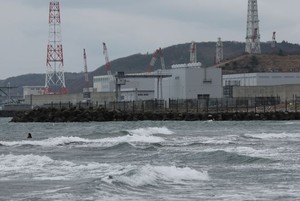THE ASAHI SHIMBUN
July 21, 2022 at 14:39 JST
A seventh wave in the COVID-19 pandemic is shattering daily records across Japan, placing a gargantuan burden on the medical care structure.
An unprecedented 152,536 cases were reported July 20, with daily records shattered in 30 of the nation’s 47 prefectures.
Five prefectures reported that more than half of their hospital beds set aside for COVID-19 patients were already filled as of July 19.
Beds have been filling up fast in recent weeks. For example, Wakayama Prefecture in central Japan reported 16 percent of hospital beds for COVID-19 patients filled two weeks ago, but by July 19 the figure had reached 59 percent.
Osaka Governor Hirofumi Yoshimura said at a July 20 news conference that the medical care structure in the prefecture was already under great strain. Prefectural authorities reported more than 20,000 new COVID-19 cases for the first time on July 20. Only a week earlier, Osaka had more than 10,000 cases for the first time in four months.
The hospital bed usage ratio reached 20 percent on July 10, but doubled again to 40.6 percent on July 20, placing the prefecture close to the 50 percent guideline it has set as the benchmark for a state of emergency.
Okinawa Prefecture, which continues to have the highest number of COVID-19 cases per 100,000 residents, said July 19 that 74 percent of hospital beds for such patients were filled.
Many hospitals are already struggling with chronic staff shortages, and there have been cases of doctors and nurses becoming infected with COVID-19. Some hospitals were forced to shut down certain specializations, including emergency care.
In Okinawa, 939 medical care staff could not report to work on July 20 because they were confirmed infected or had come in close contact with someone who was infected.
Yokohama Rosai Hospital in Kanagawa Prefecture, just west of Tokyo, could face a similar situation in a matter of days.
Of the 1,000 or so doctors and nurses at the hospital, about 40 are unable to show up to work.
According to Tomoki Nakamori, who heads the hospital’s emergency center, restrictions might have to be placed on accepting emergency patients if the staff shortage gets any worse.
The sharp increase in COVID-19 patients has forced the hospital to temporarily close some sections and turn those beds over to infected patients.
The 10 beds originally set up exclusively for COVID-19 cases are now filled by patients aged between 75 and 95. The hospital is moving to set up an additional 22 beds for COVID-19 patients.
“But if we continue to shut down other sections to deal with COVID-19, we will be unable to fulfill our responsibility as a core hospital for this community,” Nakamori said.
Owase General Hospital in Mie Prefecture, central Japan, is also a core hospital for emergency care and surgeries in the region.
But six doctors were confirmed infected with COVID-19 on July 9 and 10, and by July 16, a total of 17 hospital staff were infected.
That forced the hospital to stop providing emergency outpatient care from July 9. No new patients seeking surgical or internal medicine care were being accepted, either.
As doctors began testing negative, emergency outpatient care was resumed on the evening of July 20. But in the interim, emergency patients had to go to a hospital in Matsusaka, about 80 kilometers away.
The Fire and Disaster Management Agency reported a sharp increase in cases where ambulance staff had problems finding a hospital to take in a patient immediately.
For the week ending July 17, the agency reported 4,139 such cases around the nation, a 43-percent increase over the previous week. Of that number, agency officials said 1,598 cases involved patients suspected of having COVID-19.
(This article was written by Koshin Mukai, Shogo Mitsuzumi, Chifumi Shinya, Toshinari Takahashi, Yoshinori Hayashi and Hidemasa Yoshizawa.)




















A peek through the music industry’s curtain at the producers who harnessed social media to help their idols go global.
A series based on diplomatic documents declassified by Japan’s Foreign Ministry
Here is a collection of first-hand accounts by “hibakusha” atomic bomb survivors.
Cooking experts, chefs and others involved in the field of food introduce their special recipes intertwined with their paths in life.
A series about Japanese-Americans and their memories of World War II